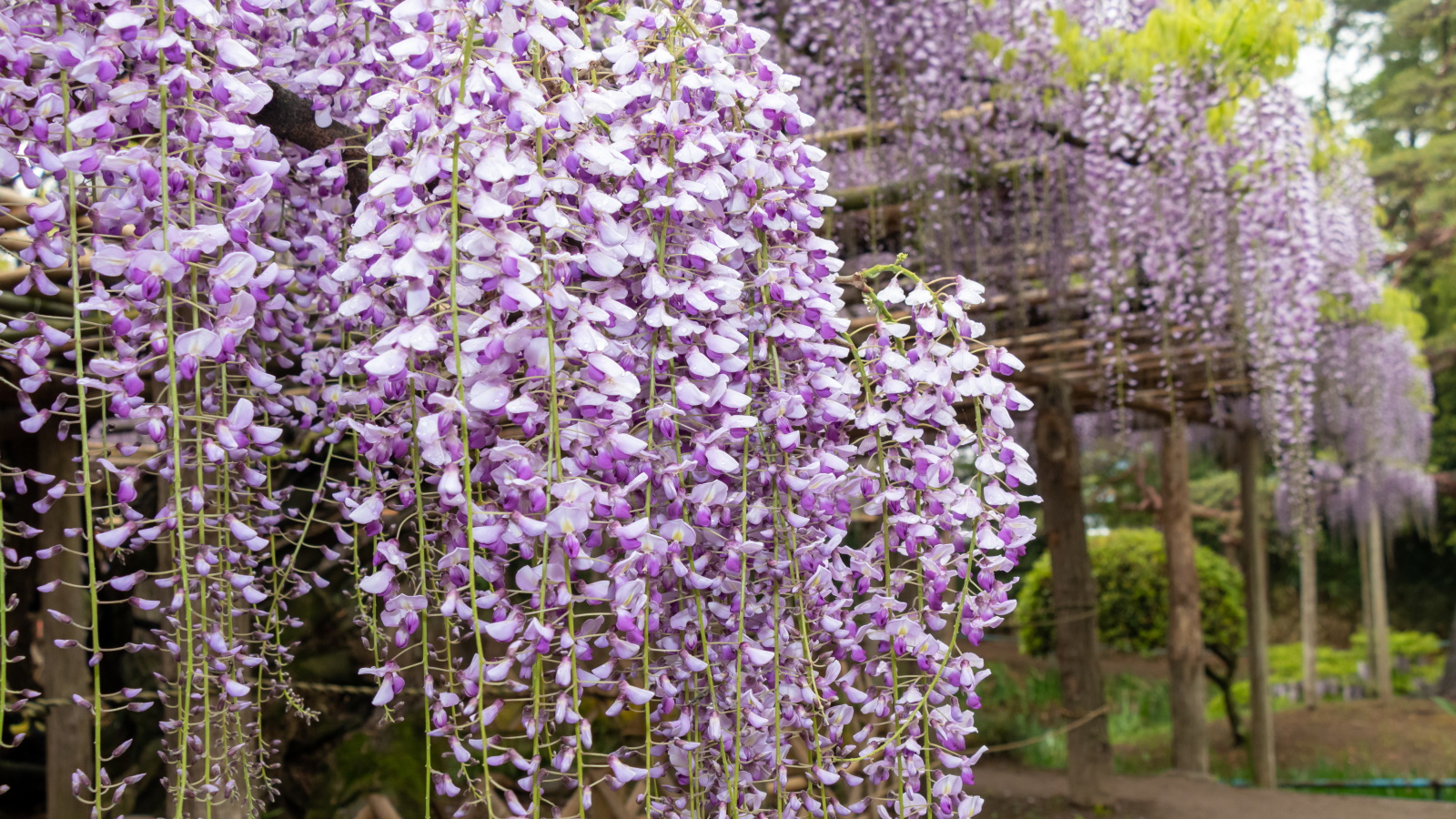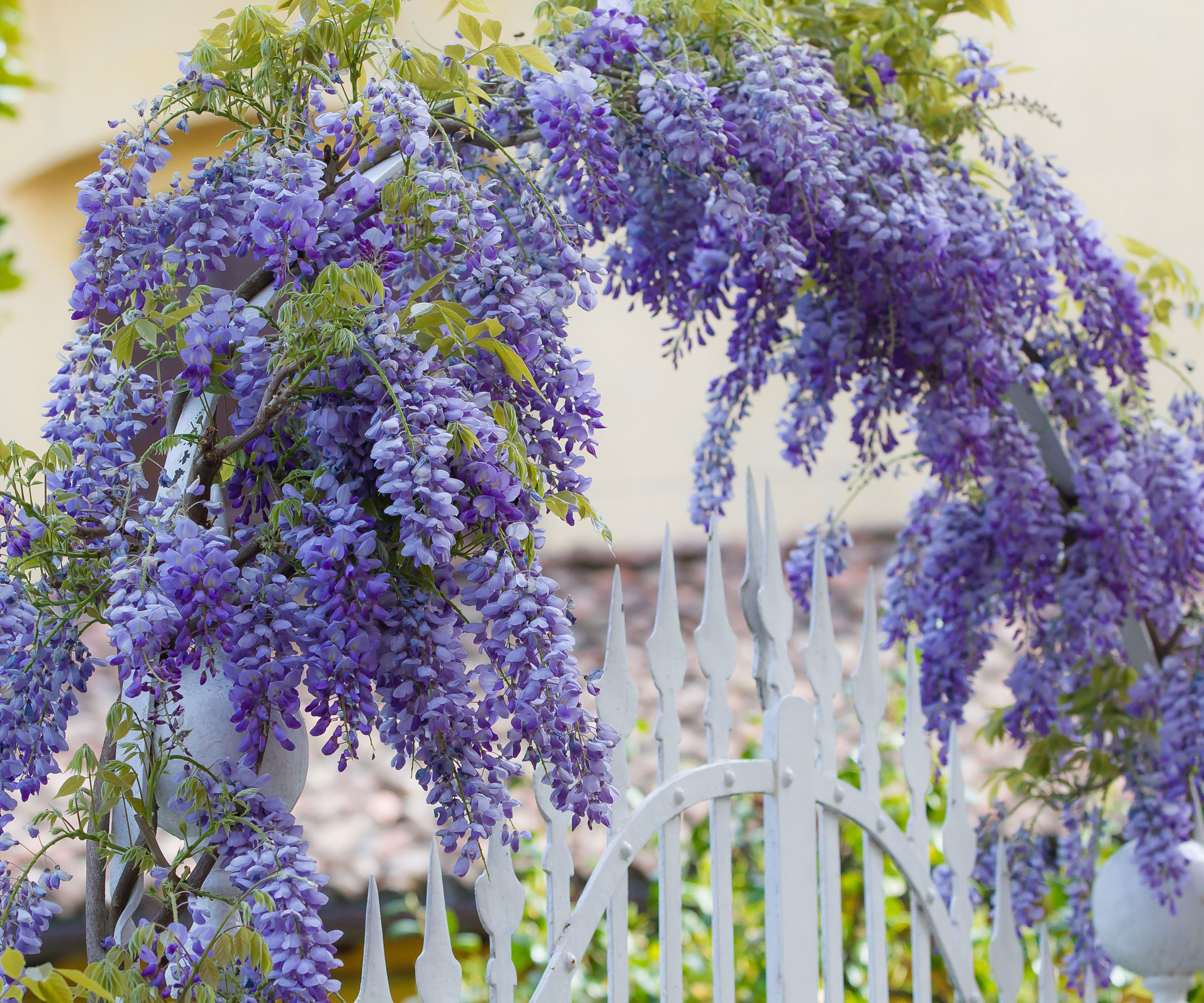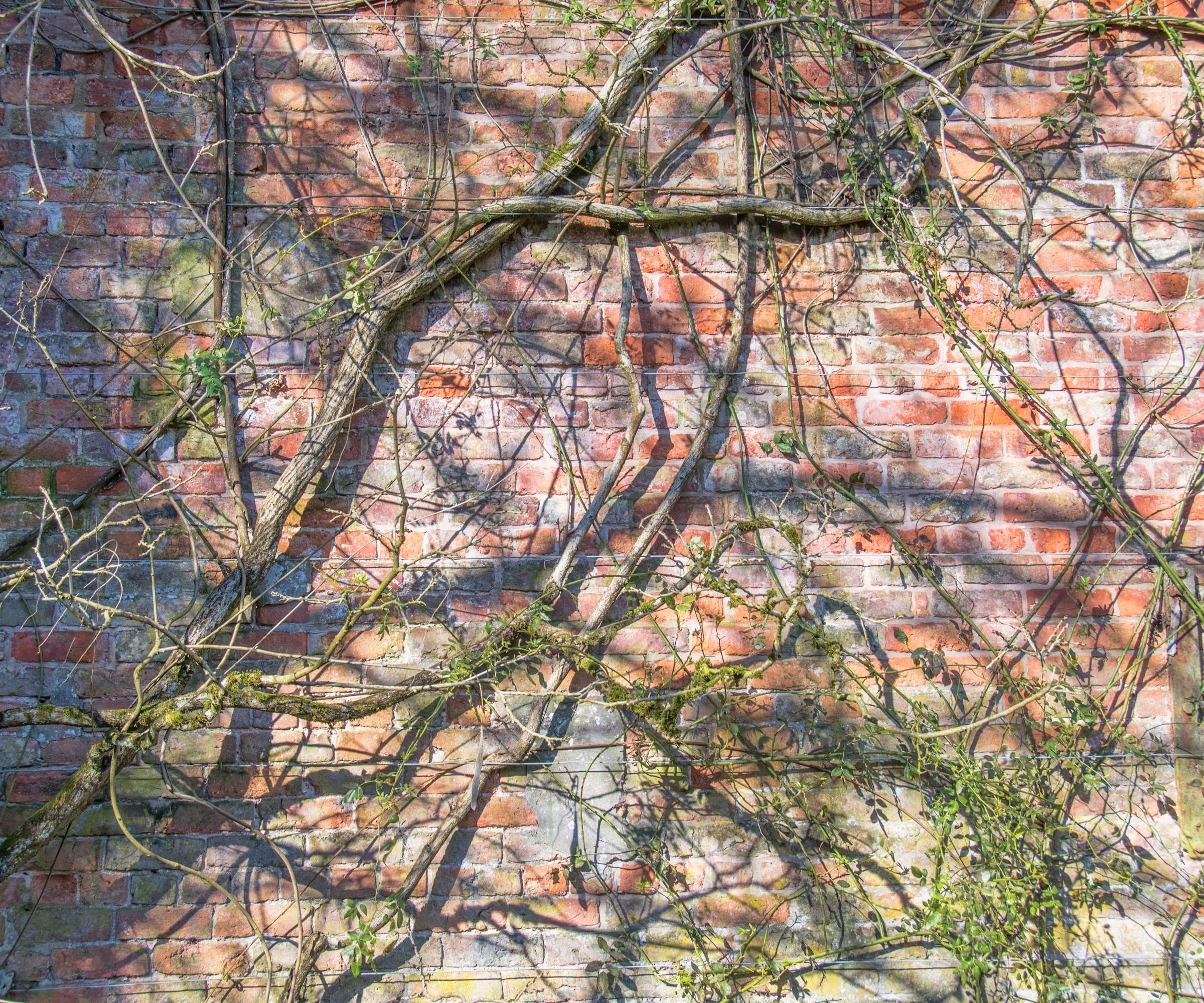How to grow wisteria from cuttings – advice for patient gardeners
While propagation is an easy way of growing more plants, wisteria can take decades to flower from cuttings


Have you ever considered how to grow wisteria from cuttings? Fortunately, this flowering climber can be propagated by taking softwood cuttings, and it is relatively easy to do.
Wisteria is celebrated for its pea-like flowers that cloak walls, fences and entranceways, popular with onlookers and pollinators who adore the lilac or white blooms that perfume the air with an unmistakable floral fragrance. Often considered one of the best climbing plants, wisteria is the perfect option for those seeking romantic cottage garden ideas.
With the right maintenance and care, wisteria can become a reliable - if slightly vigorous - climbing plant, that can help to add vertical floral interest to any outside space. So, why not have a go at increasing your wisteria plant stock? Here, we share advice on how to grow wisteria plants from cuttings, providing gardeners with all the information they need to know.

How to grow wisteria from cuttings
Wisteria plants are popular flowering climbers, prized for their fragrant lilac or white blooms. When considering how to grow wisteria from cuttings, established climbers can be used to make more plants by propagation. Gardeners can take softwood cuttings in the spring to produce more plants that can be planted elsewhere in the backyard, or given as gifts to gardener friends and neighbors.
How long do cuttings of wisteria plants take to flower

Wisteria plants are known to be vigorous climbers, growing quickly and spreading across trellises, walls and garden structures. In certain US states, some species of wisteria are considered to be invasive plants, including in Texas and Florida. It is always recommended to seek advice from your local municipality or government office regarding what plants are suitable for growing in your area.
While wisteria plants may grow rapidly, wisteria cuttings conversely are known to be slow to flower. While they may grow quickly, covering walls and fences with attractive foliage, it can take anywhere between 5 to 20 years for cuttings to flower, meaning that your cutting will remain a foliage plant for several years.
It is for this reason that many gardeners wondering how to grow wisteria from cuttings are often recommended to buy established wisteria plants from garden stores instead. Wisteria plants sold in nurseries and garden stores will typically have been grafted onto vigorous rootstock, meaning that flowering times are much reduced.
If you are a patient gardener, taking wisteria cuttings is certainly an investment for the future, and when your cuttings do eventually flower, the result will be all the more meaningful, having waited for many years to see them bloom.

The fragrant blue moon wisteria, Wisteria macrostachya 'Blue Moon', features amazing, long racemes of sweetly fragrant, purple and blue flowers that everyone knows and loves. Blue moon wisteria is perfect for decorating an arbor or pergola, with the outstanding flowers and fragrance.
How and when to take cuttings of wisteria plants

While it can take a long time for a wisteria to flower from a cutting, it can still be a rewarding - if long-winded - garden task. If you are intent on growing wisteria from cuttings, take softwood cuttings from mid-spring, when there is no longer a risk of frost and when the plant is producing new, green growth.
Taking wisteria cuttings is a relatively simple task to do:
- First, trim a handful of young, green stems with multiple leaf nodes.
- Once you are happy that you have enough clippings - I would recommend taking more than you need, as some cuttings might die - trim them all back to about 3 or 4 inches.
- Remove the lower leaves from the bottom half of each cutting, leaving about 3 or 4 small leaves at the top.
- Select one or two small plastic containers, and fill them with a well-draining potting compost. I tend to incorporate grit or vermiculite when mixing compost for cuttings, to ensure that there is adequate drainage.
- Water your pot(s), allowing the water to drain away. The soil should be moist.
- Following this, use a pencil to make narrow holes to then plant the cuttings.
- Use a small, clear plastic bag to cover each pot, and use an elastic band or twine to tie the bag around the base of the pot.
- Place the cuttings in a bright, mild position, such as in a cold frame.
- Regularly monitor your cuttings, checking for signs of growth. Once you can see new leaf or root growth, remove the plastic bag and pot each cutting into a small pot of its own.
FAQs
How long do wisteria cuttings take to bloom?
Wisteria cuttings can take anywhere between 5 to 20 years to flower. Many gardeners prefer to buy established wisteria plants from garden stores or plant nurseries, knowing that these climbing plants will flower much sooner, as they tend to be grown on vigorous rootstock. Taking wisteria cuttings is a garden task for patient gardeners, but can still be a fun and exciting project to try.
Taking wisteria cuttings can be a rewarding experience and while your softwood cuttings may take a lot longer to flower than other propagated plants, if you have the time and the patience, it might be a project to consider for spring.
If you are keen to take cuttings in your yard this year, why not consider our guide on how to propagate hydrangeas, increasing your supply of this popular flowering shrub?
Sign up to the Homes & Gardens newsletter
Design expertise in your inbox – from inspiring decorating ideas and beautiful celebrity homes to practical gardening advice and shopping round-ups.

Thomas is a Content Editor within the Gardens Team at Homes and Gardens. He has worked as a professional gardener for both public spaces and private estates, specializing in productive gardening, growing food and flowers. Trained in Horticulture at the Garden Museum, he has written on gardening and garden history for various publications, including The English Garden, Gardens Illustrated, Hortus, The London Gardener and Bloom. He has co-authored a Lonely Planet travel book, The Tree Atlas, due out in 2024.
-
 Plants never to grow next to fruit trees
Plants never to grow next to fruit treesExpert advice on which plants to keep away from fruit trees to encourage a healthy harvest
By Jacky Parker Published
-
 Martha Stewart's tips for arranging daffodils are unbelievably simple and effective – it's the only flower advice you need this springtime
Martha Stewart's tips for arranging daffodils are unbelievably simple and effective – it's the only flower advice you need this springtimeMartha shows us that we can create gorgeous bouquets of this seasonal flower by simply trimming the stems and placing them in specific vases
By Hannah Ziegler Published